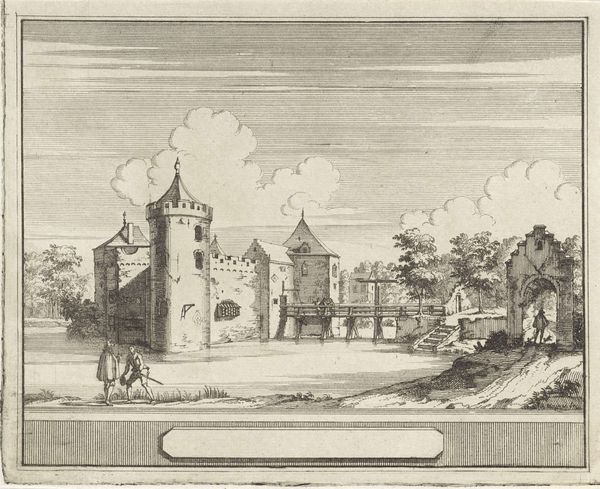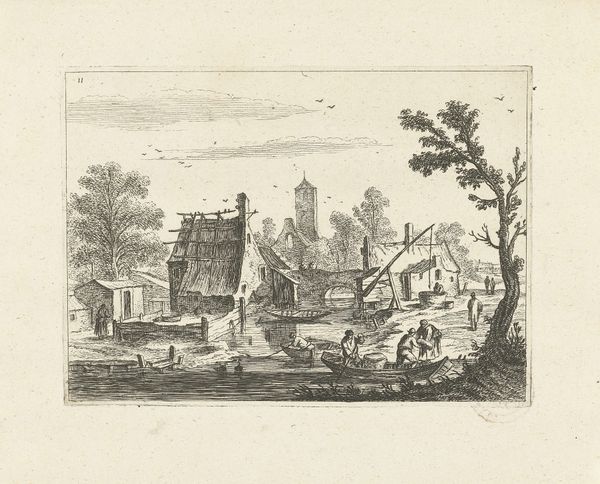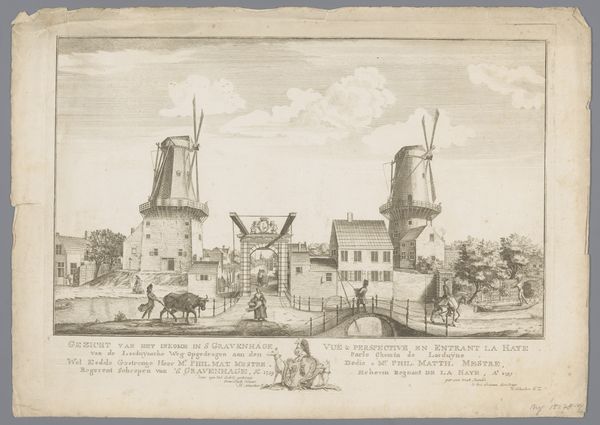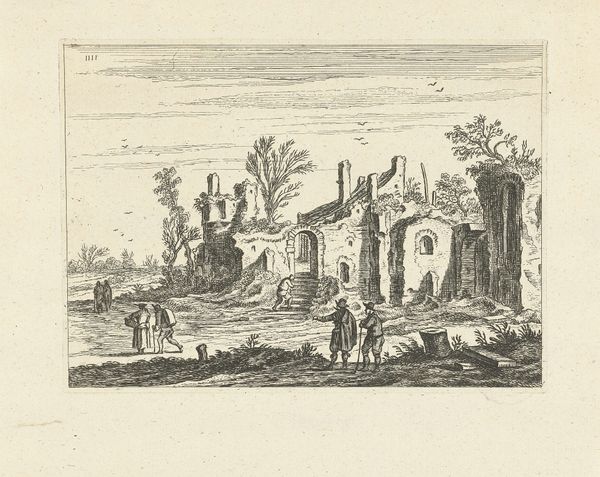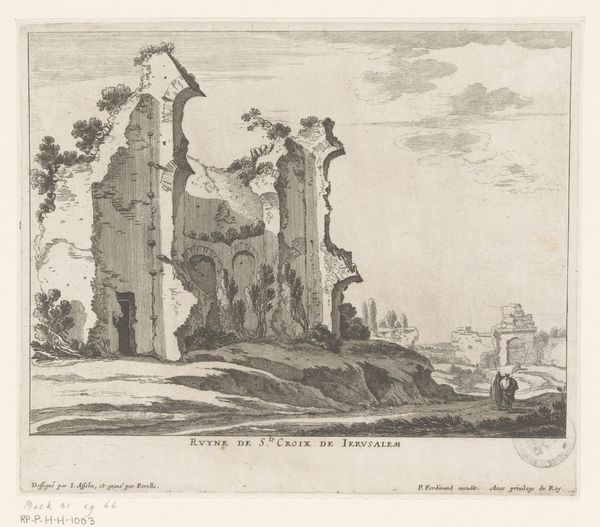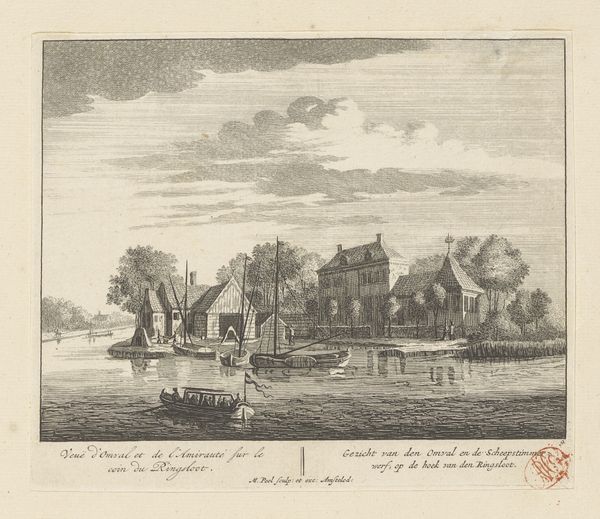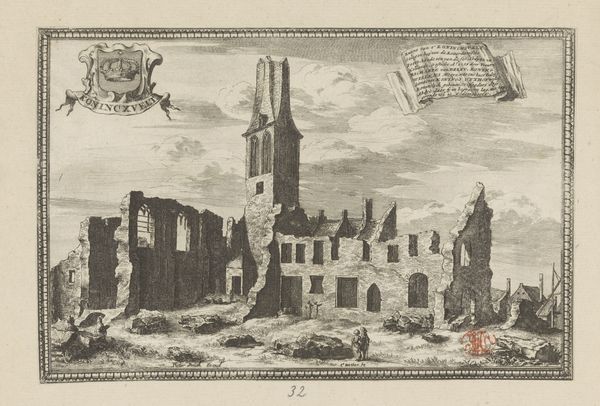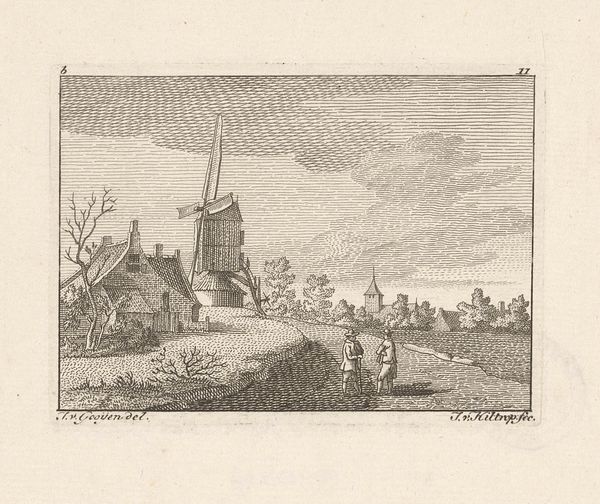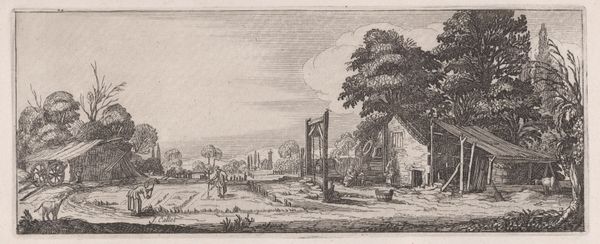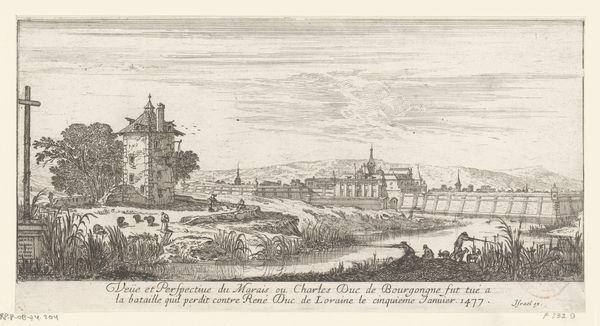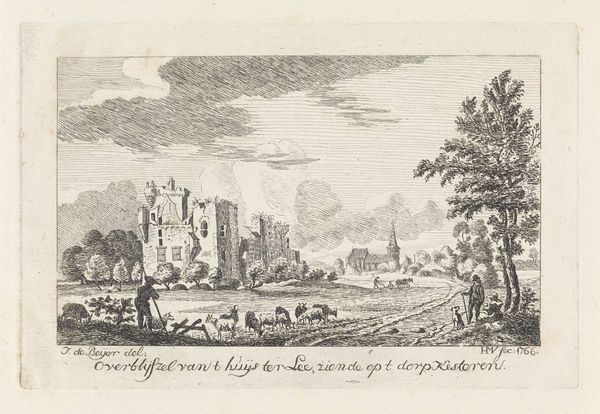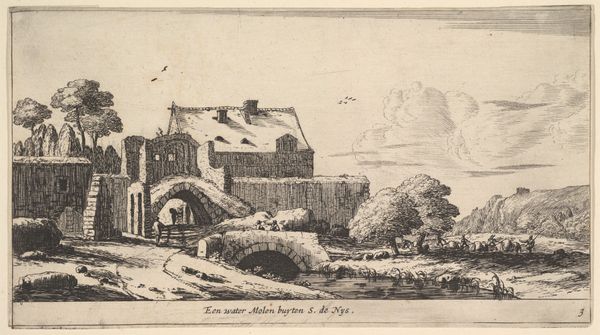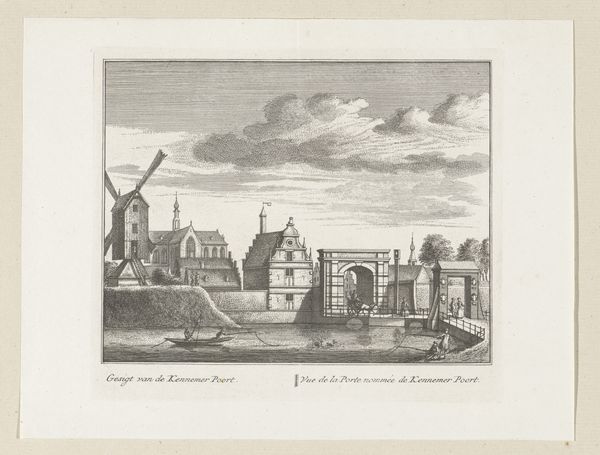
print, engraving, architecture
#
baroque
# print
#
landscape
#
engraving
#
architecture
Dimensions: height 141 mm, width 179 mm
Copyright: Rijks Museum: Open Domain
Curator: Let's turn our attention to this intriguing piece, “View of the Ruin of the Abbey at Rijnsburg,” attributed to Jacobus Schijnvoet, and created sometime between 1711 and 1774. Editor: It’s immediately melancholic. The lines are so fine, but the overall impression is of decay. You see that stark contrast between what was and what is, very affecting. Curator: Precisely. Schijnvoet's baroque style highlights the abbey's architecture as both a symbol of former power and an explicit example of the effects of time. It reflects the popular 18th-century romantic fascination with ruins and their ability to evoke historical contemplation. Editor: As an engraving, the lines speak volumes about labor and material choices. Think of the precision involved, the copper plate meticulously worked upon to reproduce this image for a potentially wider audience. Was it intended as an architectural record? A memento mori? The physical effort in creating such a scene can't be overlooked. Curator: It served multiple purposes, no doubt. Prints like these democratized access to landscapes and monuments previously only experienced by the wealthy. It placed the observer within reach of realms beyond daily reality. Editor: But within reach how? Think of the societal impact – the engraving itself becoming a commodity. People consumed this decay from the comfort of their homes. The image serves a decorative and perhaps sentimental purpose, distanced from the physical reality of ruin and labour represented. Curator: Perhaps the emotional draw from the print fostered broader discussions around heritage and national identity, a very young concept at that point. The ruin signifies both loss and survival, a reflection of the Dutch national story perhaps. Editor: Interesting perspective! From the Materialist viewpoint, though, its endurance resides as much in the plate, the paper, and the repetitive action required to replicate its message than it does purely in allegory. These material decisions shape what is observed. Curator: Well, on that somewhat sobering, material note, I suppose our time is up! A wonderfully detailed, thought-provoking meditation, no doubt. Editor: Indeed, from cultural artefact to physical object; lots to ponder with this abbey in decay!
Comments
No comments
Be the first to comment and join the conversation on the ultimate creative platform.
